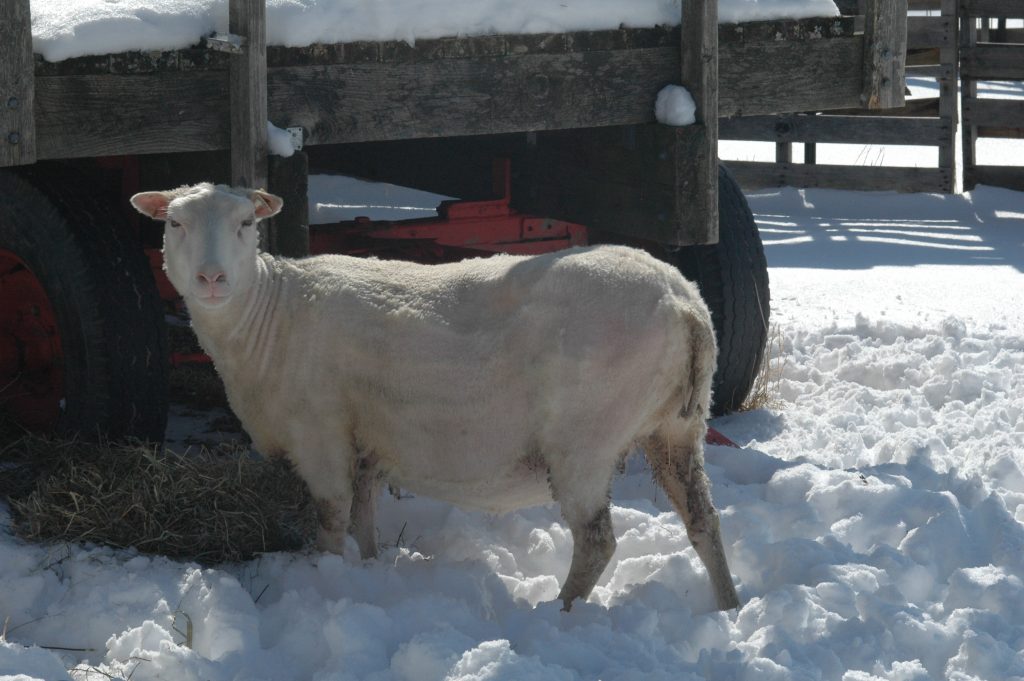I’ve received a few questions lately regarding our reasoning for removing the cozy blanket of wool from our ewes while the seasons are at their coldest. Our biggest reason is preparation for the coming lambs. If the ewes have long wool during lambing, the lambs can have a harder time finding the teat and therefore take longer to get that essential first drink of colostrum. They also can easily confuse a dirty lock of wool for a teat, and get themselves sick sucking on it. Since long wool makes a thick insulation, it is more likely that the wooly ewe may lie down on a lamb accidentally, smothering it. In addition, a sheared ewe is more likely to choose a warm, sheltered location to give birth, which improves the chances of tiny wet lambs staying warm on a cold night. From the shepherd’s point of view, it is much easier and more effective to monitor ewe health and condition without the fluffy wool that easily disguises thin ewes as fat.

There is some stress caused by shearing, but that stress is outweighed by the many benefits listed above. There are some steps we take to reduce shearing day stresses even further. We choose to shear 4 to 6 weeks before the first expected lambs, so the ewes are not hugely pregnant yet. We also fast the sheep for 24 hrs before shearing. Since the rumen(the main stomach) of the sheep holds 5 – 10 gallons of liquid when full, it is very uncomfortable for them to be moved into the various positions for shearing after having eaten. Fasting for a day is mildly inconvenient for them, but hugely helpful for their comfort levels(and safety of the shearer!) during the shearing.
